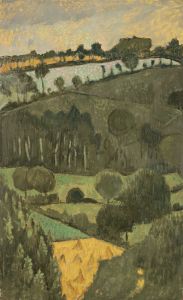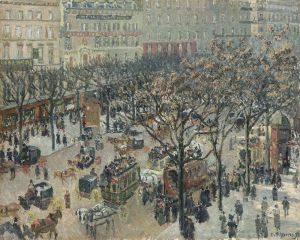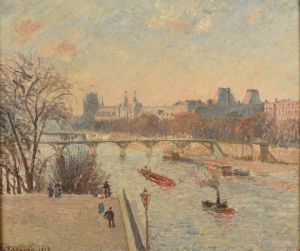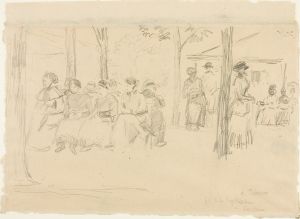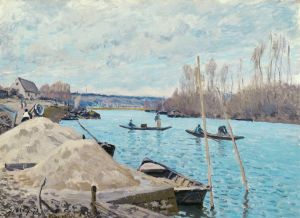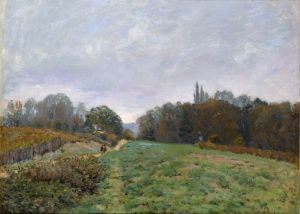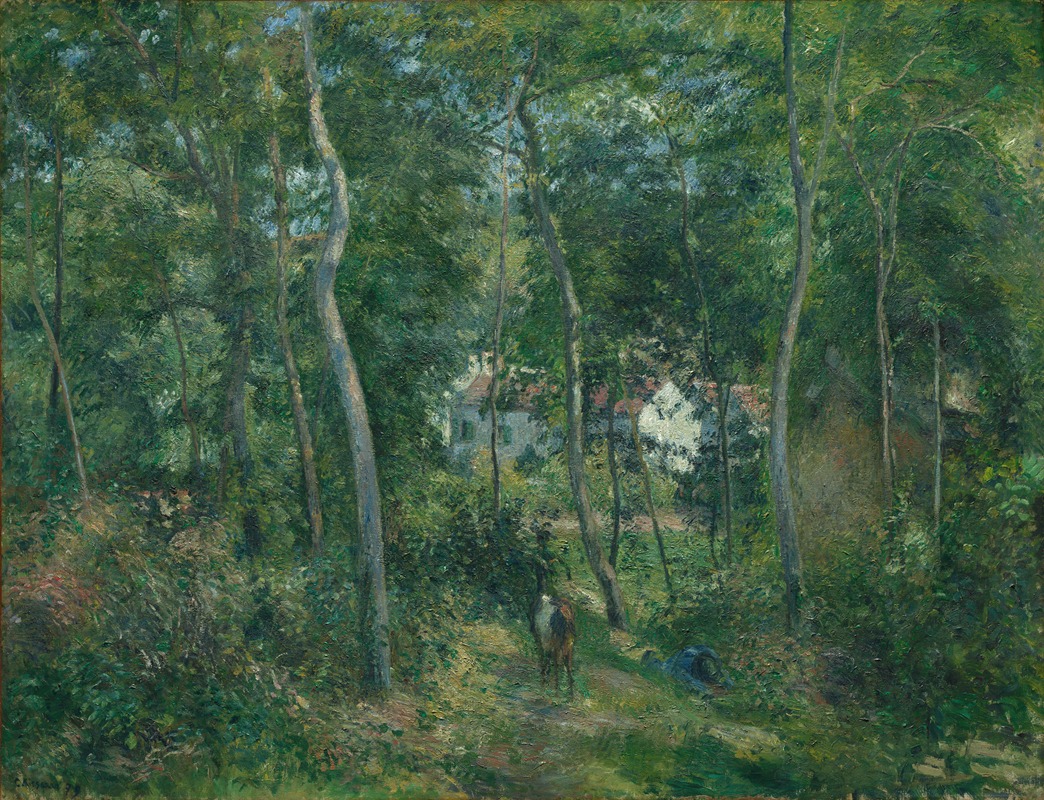
Edge of the Woods Near L’Hermitage, Pontoise
A hand-painted replica of Camille Pissarro’s masterpiece Edge of the Woods Near L’Hermitage, Pontoise, meticulously crafted by professional artists to capture the true essence of the original. Each piece is created with museum-quality canvas and rare mineral pigments, carefully painted by experienced artists with delicate brushstrokes and rich, layered colors to perfectly recreate the texture of the original artwork. Unlike machine-printed reproductions, this hand-painted version brings the painting to life, infused with the artist’s emotions and skill in every stroke. Whether for personal collection or home decoration, it instantly elevates the artistic atmosphere of any space.
"Edge of the Woods Near L’Hermitage, Pontoise" is a painting by the renowned French artist Camille Pissarro. Created in 1879, this work is an exemplary piece of Pissarro's contribution to the Impressionist movement, which sought to capture the transient effects of light and atmosphere in the natural world.
Camille Pissarro was born on July 10, 1830, on the island of St. Thomas in the Danish West Indies (now the U.S. Virgin Islands). He moved to Paris in 1855, where he became a central figure in the Impressionist group, which included artists such as Claude Monet, Edgar Degas, and Pierre-Auguste Renoir. Pissarro is often referred to as the "father of Impressionism" due to his pivotal role in organizing and participating in the group's exhibitions.
"Edge of the Woods Near L’Hermitage, Pontoise" depicts a serene rural scene near the village of Pontoise, located northwest of Paris. Pissarro moved to Pontoise in 1866 and lived there for many years, finding inspiration in the picturesque landscapes and rural life. The painting captures the edge of a wooded area, with trees and foliage rendered in the distinctive loose brushwork and vibrant color palette characteristic of the Impressionist style.
The composition of the painting is carefully balanced, with the dense foliage on the left side of the canvas contrasting with the open space on the right. The use of light and shadow creates a sense of depth and dimension, drawing the viewer's eye into the scene. Pissarro's attention to detail is evident in the varied textures of the leaves, grass, and tree trunks, which are depicted with a combination of short, quick brushstrokes and more deliberate, elongated strokes.
Pissarro's choice of subject matter reflects his interest in the everyday beauty of the natural world. Unlike some of his contemporaries who focused on urban scenes or grand historical events, Pissarro often painted rural landscapes and scenes of peasant life. This focus on the ordinary and the humble is a hallmark of his work and contributes to its enduring appeal.
"Edge of the Woods Near L’Hermitage, Pontoise" is housed in the collection of the Metropolitan Museum of Art in New York City. The painting is part of the museum's extensive collection of Impressionist works, which includes pieces by many of Pissarro's contemporaries. The acquisition of this painting by a major institution like the Metropolitan Museum of Art underscores Pissarro's significance in the history of art and the lasting impact of his work.
In summary, "Edge of the Woods Near L’Hermitage, Pontoise" is a quintessential example of Camille Pissarro's Impressionist style. Through his masterful use of color, light, and composition, Pissarro captures the tranquil beauty of the French countryside, inviting viewers to appreciate the simple yet profound beauty of nature.





